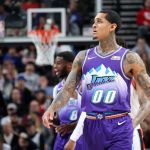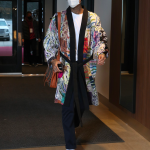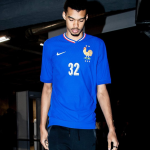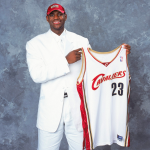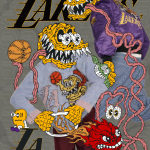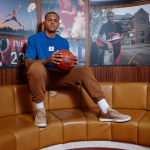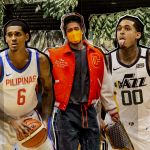
What it means to become a sports icon in the Philippines
The story of Jordan Clarkson and the new Utah Jazz fanbase in the country
April 9th, 2021
Jordan Clarkson is one of the biggest revelations of this NBA season and is one of the main exponents of the new wave of talents linked to the fashion world along with Shai, Tatum and Kuzma. The combo guard of the Utah Jazz is experiencing the best season of his career and, in addition to being among the candidates for the title of 6th man of the year thanks to an average of more than 17 points per game off the bench, he is a serious candidate for the MFP award: Most Fashionable Player.
The aesthetic evolution of Jordan Clarkson - who since 2018 has decided to transform his body into a perfect drawing board for Steve Levy's creations - has allowed him to become a style icon, emerging on and off the court. Symbol of a new hype and a fashion that is no longer controlled by brandi alone but also by prominent personalities who influence the trends.
Jordan Clarkson goes beyond the idea of a symbol, he who has become in effect a national icon. The Jazz player is part of the third generation of Filipino-Americans, people born in the United States but with Filipino descendants. A bit like Kyrie Irving, Clarkson's origins remained in the shadows throughout much of his childhood but thanks to grandmother Marcelina Tullao, the Philippines is once again part of the DNA of the former Lakers and Cavaliers.
Being the icon - and standard-bearer at the 2018 Asian Games - of a nation in love with basketball and the point of reference for an enormously expanding market is not simple. Everything is magnified and every action is filtered by a people who celebrate and follow their idol as if he were their own son. In a New York Times article, Scott Cacciola recreated the stages of the journey that led Clarkson to become the hero of the new and old Filipino generations. The American journalist started from the audience figures for this season (the views of the Jazz matches in that corner of the world have increased by 45% and the video of the super game against the Nets has been viewed 1.2 million times in the Philippines alone) to get to the 2015 trip, the one that reconciled Jordan with his roots.
The fame of the #00 of Utah coincides with his arrival in the NBA in 2014, chosen by Washington but immediately turned to the Los Angeles Lakers. The yellow-purple are the first team in the Philippines thanks to the numerous visits (at least 6 official ones with Nike) by Kobe Bryant, to whom one of the most incredible playgrounds in the world has been dedicated. Kobe, the Lakers and fashion are 3 milestones at the beginning of his career for Clarkson, who seems to have a story for each story despite being only 29 years old. A Filipino-born player declaring himself eligible for the draft is a significant event for the community and Gabe Norwood - one of the founding fathers of the Filipino basketball movement - sends a special edition of the Kobe's shoes to the young talent from Missouri once he hears the news. He will wear those shoes during all pre-draft training and ultimately impress the Lakers.
It's from the Lakers that the latest story that connects Clarkson to the Philippines also starts. Paolo del Rosario is one of the many young people - today a journalist and TV host - who became passionate about basketball watching the NBA at the end of the 90s. Everyone was crazy about yellow-purple, while he loved the Stockton-Malone duo. But everyone else cheers on Lakers while Paolo is on the other side of the fence. For years del Rosario was the only Jazz fan in the Philippines, but since Clarkson moved from the Cavs to Utah he is no longer alone. The entire nation appears to have converted, bringing the Salt Lake City franchise into a hitherto almost nonexistent market.
Jordan Clarkson was able to create, thanks to his deep connection with the Philippines, a huge fan base that made Utah Jazz grow outside the American borders. Nikko Ramos, SLAM's Manila correspondent, hints at the door to the expansion when he says the NBA "may not be ready for online reaction from this part of the world in case Clarkson doesn't win the Sixth Man Award".
But there is an episode that best of all sums up the power of the Filipino basketball community and in particular linked to its hero. During the time of the Orlando bubble, the NBA gave players the ability to insert a social message in the language of their choice instead of their name. In addition to the English version, messages in Slovenian, Italian, French, Bosnian, Portuguese, Latvian and even Creole were chosen. When Jordan Clarkson decided to insert "Peace" and not "Kapayapaan" (peace in Filipino), chaos reigned in the Philippines. It became such a trending topic and so "hot" that Clarkson Sr. had to clarify the matter on Instagram, stating that "Jordan continues to represent his Filipino roots with pride". To calm the waters, some Manila entrepreneurs have decided to produce a Jazz bootleg jersey with the word "Kapayapaan" on the back. Among the buyers, of course, Paolo Del Rosario - who is no longer just cheering on Jazz.








